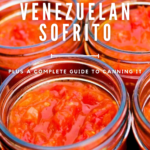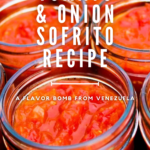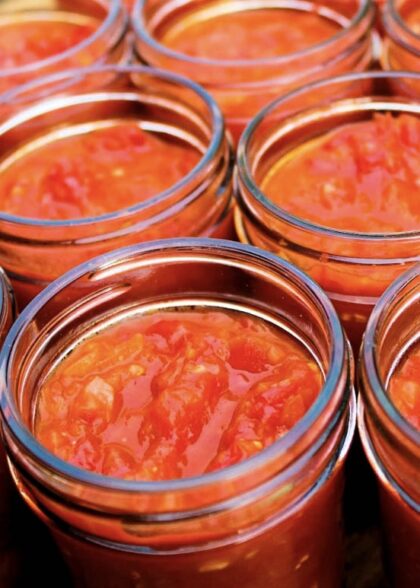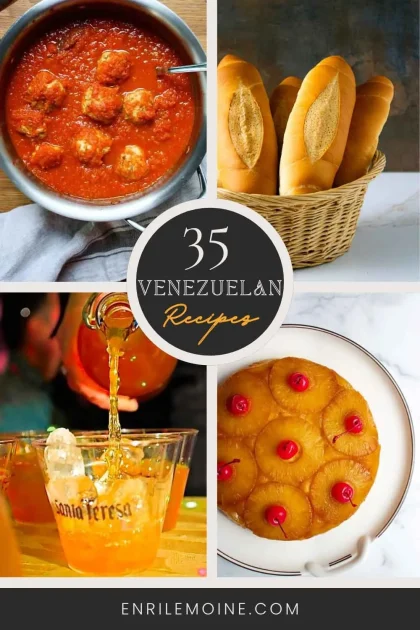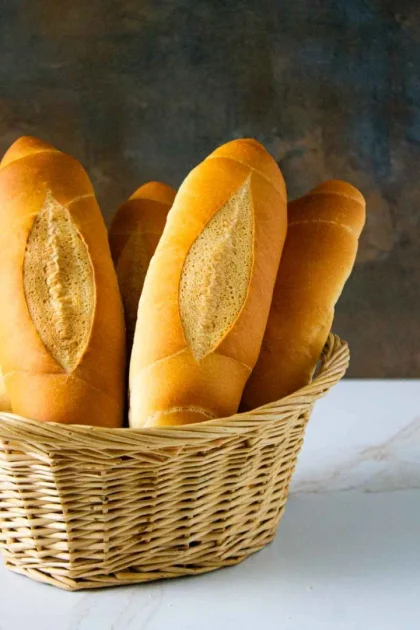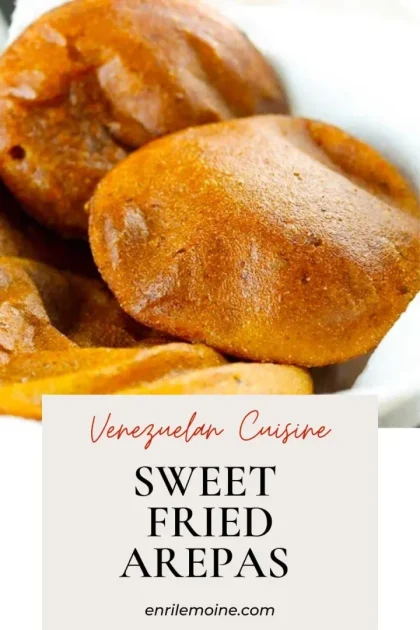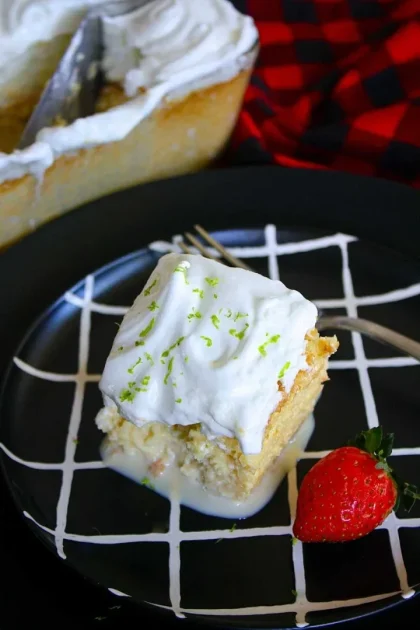This Venezuelan tomato and onion sofrito is an authentic flavor bomb that you can use for many recipes and will save you time in the kitchen. It’s all you need to make crostinis, eggs, lasagnas, soups, and you name it!
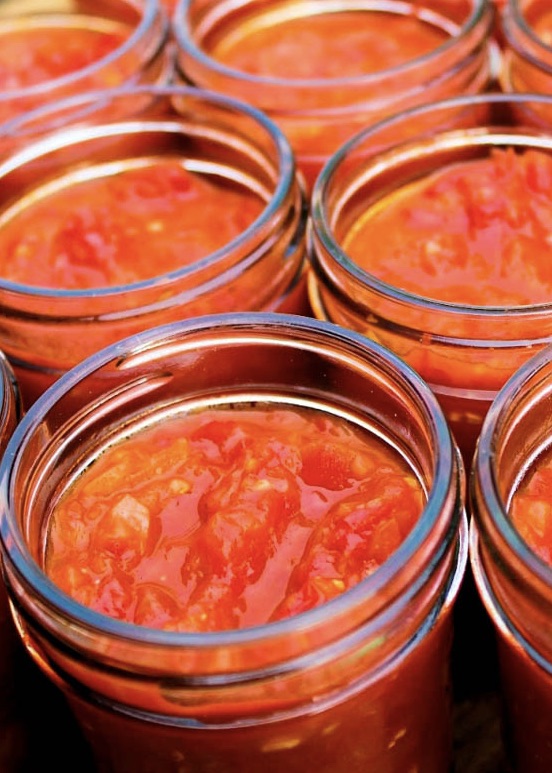
Note: Thanks to the Amazon Associates Program and other affiliate programs, I am compensated for products sold through the affiliate links in this post at no cost to the buyer.
Why you will love this recipe?
You will love this sofrito not only because it’s delicious and super easy to make. But also because if you make it in advance and save it for future use, as I do, you’ll save a lot of time when you cook. Simple!
What is sofrito?
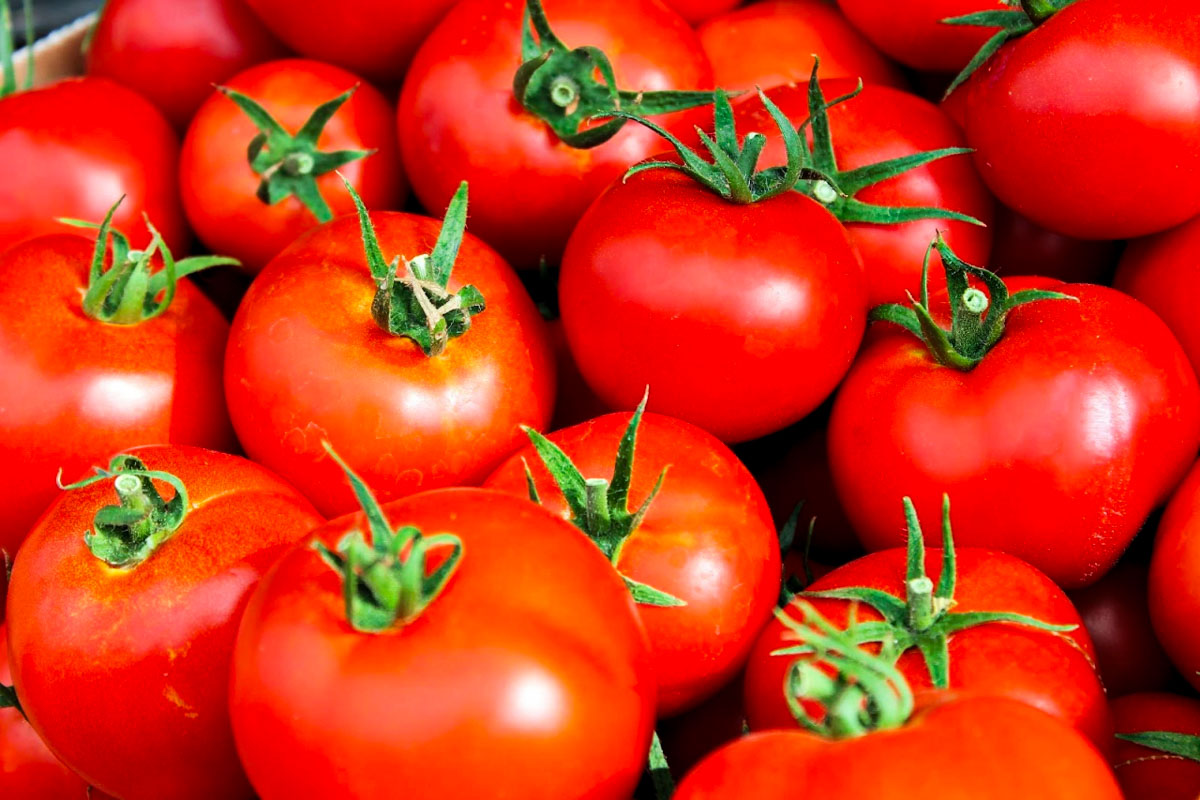
Sofrito is a cooking method and a sauce base used in many different cuisines, particularly in Latin cuisine, including the Spanish and Italian cuisines. Sofrito comes from the Spanish verb sofreír, which means to fry lightly.
In Spanish and Latin American cuisines, sofrito is often a combination of aromatic ingredients cut into small pieces and slowly sautéed or fried in cooking oil. Ingredients commonly include garlic, onion, bell peppers (usually green and red), and tomatoes. The specific mix can vary depending on the region or the dish.

In my beloved Italian cuisine, soffritto (with two ‘f’s and two ‘t’s) refers to a similar technique, but the ingredients are typically finely diced carrots, celery, garlic, and onions sautéed in olive oil.
This is often the base for many Italian sauces and dishes, such as Bolognese sauce. These bases are commonly used to add depth of flavor to dishes such as soups and stews.
The Venezuelan sofrito

Sofrito is a key ingredient used as a flavorful base for many dishes in our Venezuelan cuisine. Also known as guiso, sofrito typically consists of garlic, onion, red bell pepper, ají dulce (a unique Venezuelan variety of tiny sweet peppers), and tomatoes.
All those ingredients are sautéeed in vegetable oil until wilted. I remember my grandma Ligia using aceite onotado (achiote oil) to make her sofritos.
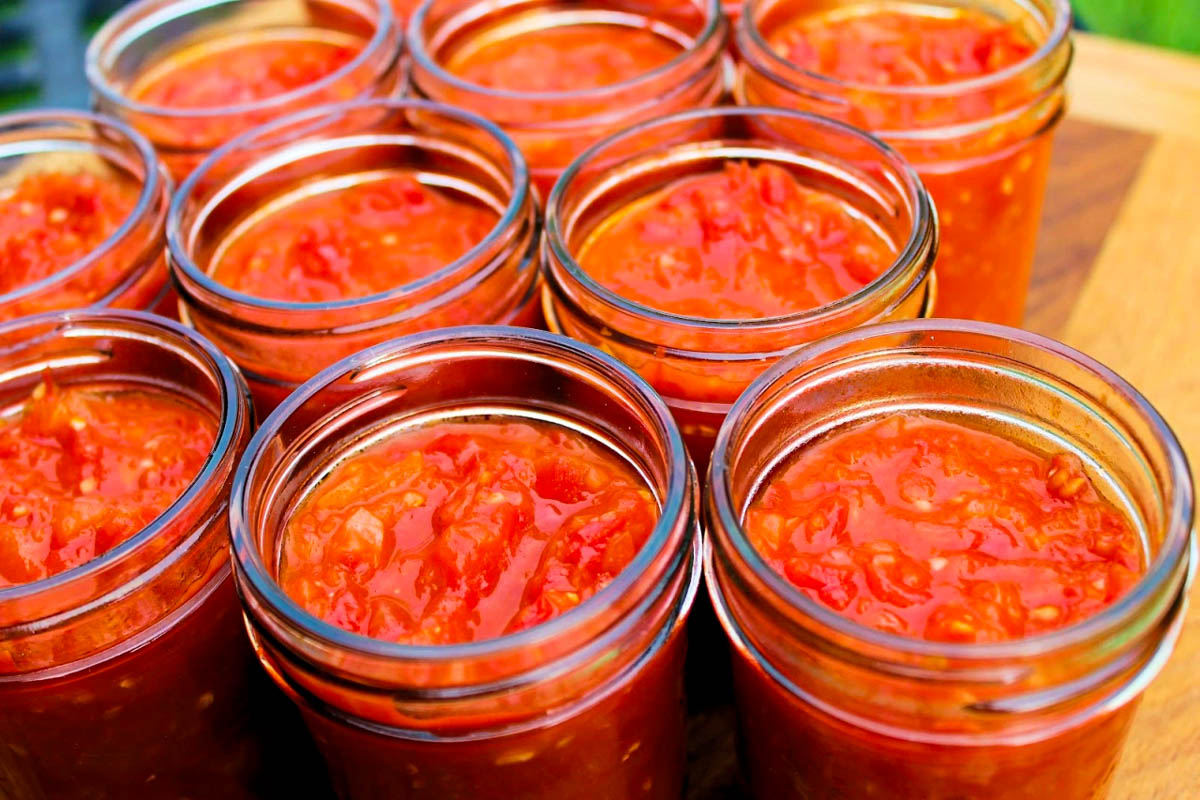
That is the classic sofrito we use to make carne mechada (shredded beef), asado negro, caraotas negras (black beans soup), and so on.
Some variations include the addition of other ingredients like green onion and leek. This sofrito makes our flavorful hallaca stew or the delicious polvorosa de pollo stew.
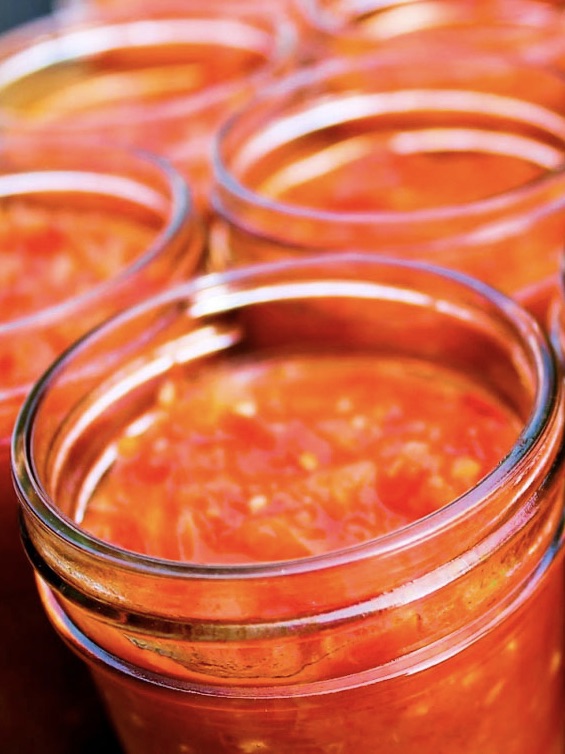
These ingredients are finely chopped, manually or in a food processor, and then sautéed in oil until they’re soft and aromatic. The quantities of each ingredient depend on the cook. There is no one sofrito recipe. Every household has a formula that passes from generation to generation.
What makes Venezuelan sofrito unique?
Venezuelan sofrito differs from other sofritos in Latin America and parts of the Caribbean because we don’t add aromatic herbs such as cilantro and culantro to the preparation: not all dishes require them. We add those aromatics (cilantro, parsley, bay leaf) during the cooking process of every dish.
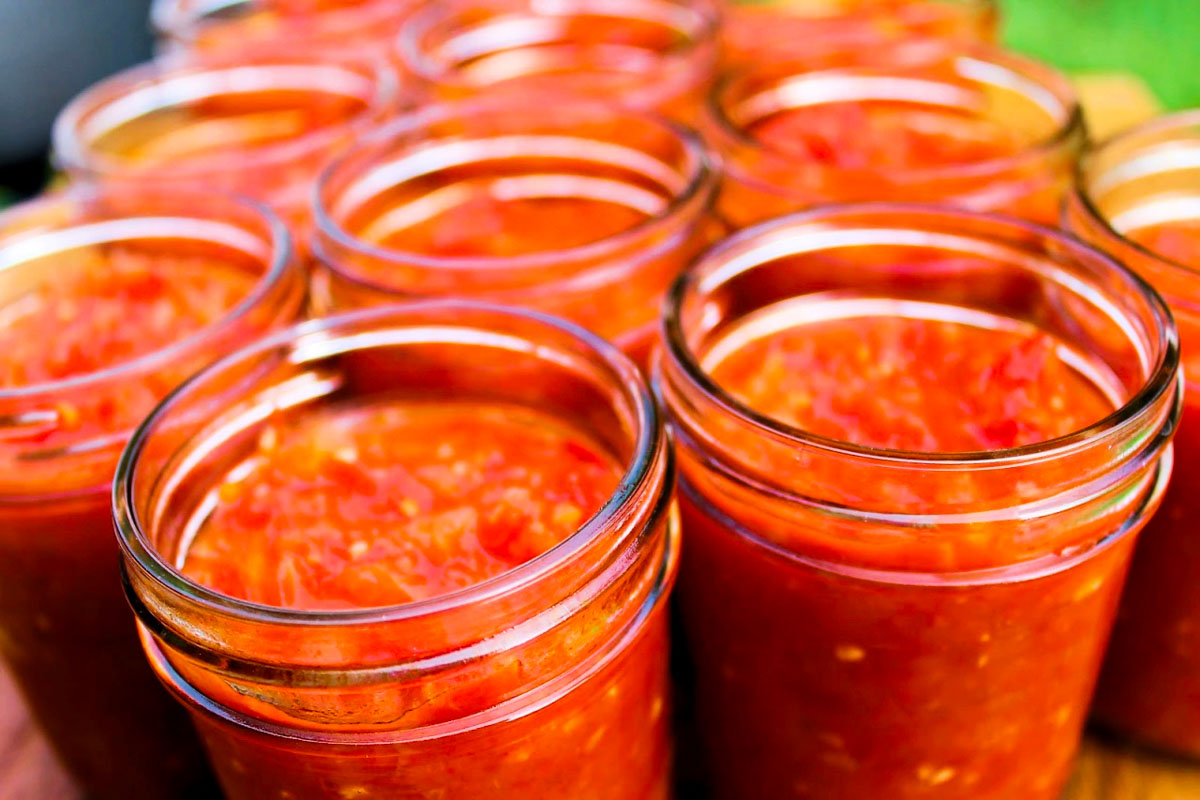
Puerto Rican sofrito, a.k.a. recaíto, for example, is a culantro based mixture. Dominican sofrito, a.k.a. sazón, also includes culantro and cilantro. Both are greenish, while Venezuelan sofrito is orange to redish.
Our sofrito is more like the redish Colombian hogao. In Colombia, once they cook their hogao, they use it not only as a sofrito base but as a sauce or condiment.
Venezuelan tomato and onion sofrito and its many uses

Another big difference between Venezuelan sofrito and recaíto from Puerto Rico or Dominican sazón is that we don’t make it in advance. We make our sofrito every time we cook. However, I’m making a big batch and preserving it in Mason jars to take advantage of the tomato season.
Today’s recipe is an extremely simple version of the traditional Venezuelan sofrito. Here I’m skipping the peppers, both the red bell pepper and the ají dulce. This is the sofrito I make to eat with bread, crostinis or to put in the layer when I make my roasted eggplant and tomato lasagna.

I find this sofrito particularly useful for breakfast to make perico (Venezuelan scrambled eggs), fried eggs or sunny side eggs with sofrito, or eggs in a sofrito nest.
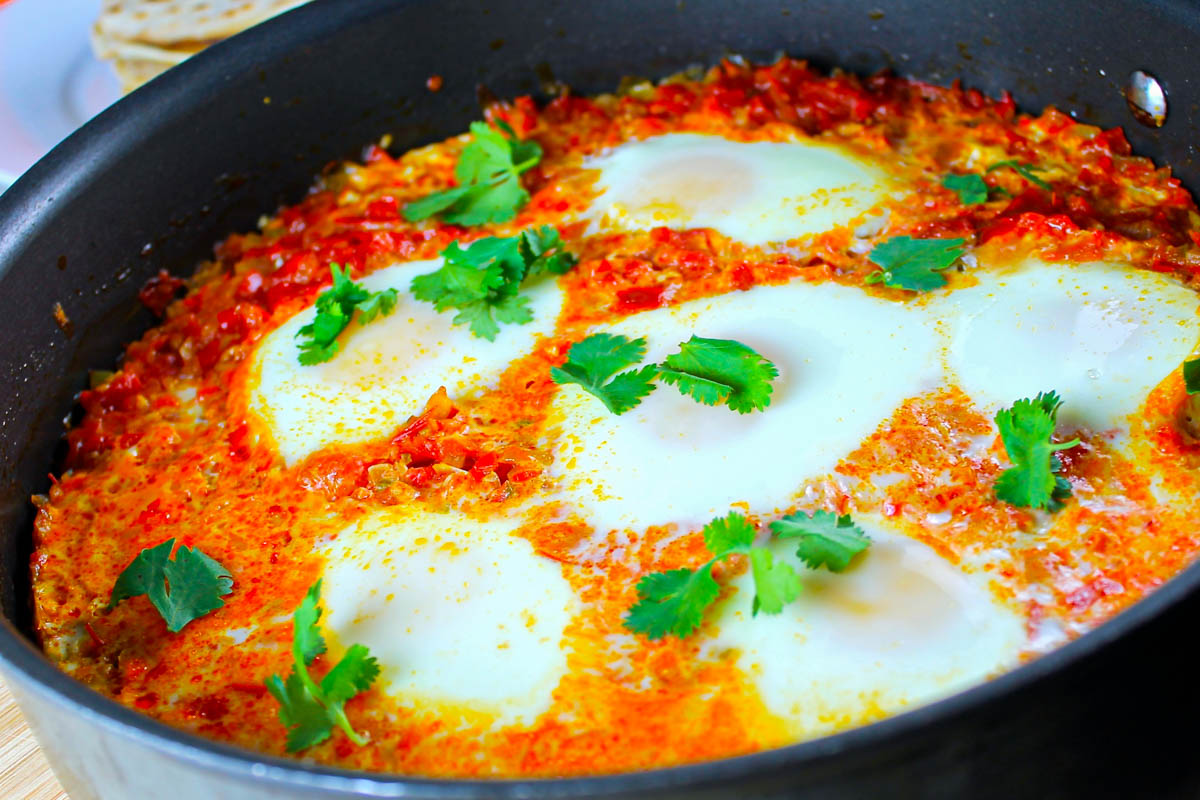
How long does sofrito last, and how to preserve it?
This sofrito will last when saved in an airtight container in the refrigerator for up to five days. If you make a big batch, you can freeze it in small portions in an ice cube tray, and once frozen, put the cubes in plastic bags.
I love preserving my sofrito in 6-ounce Mason jars and processing them in hot water until they are vacuum-sealed. This a great way to preserve food, and the best part is that you save a lot of space in your freezer, but when you open the sealed jar, it tastes like you just made the sofrito. This is the canning technique I show you in the recipe card.
Easy to make Venezuelan tomato sofrito recipe
The following is my recipe. Remember that I’m skipping the red bell pepper and the ají dulce for this particular tomato sofrito.
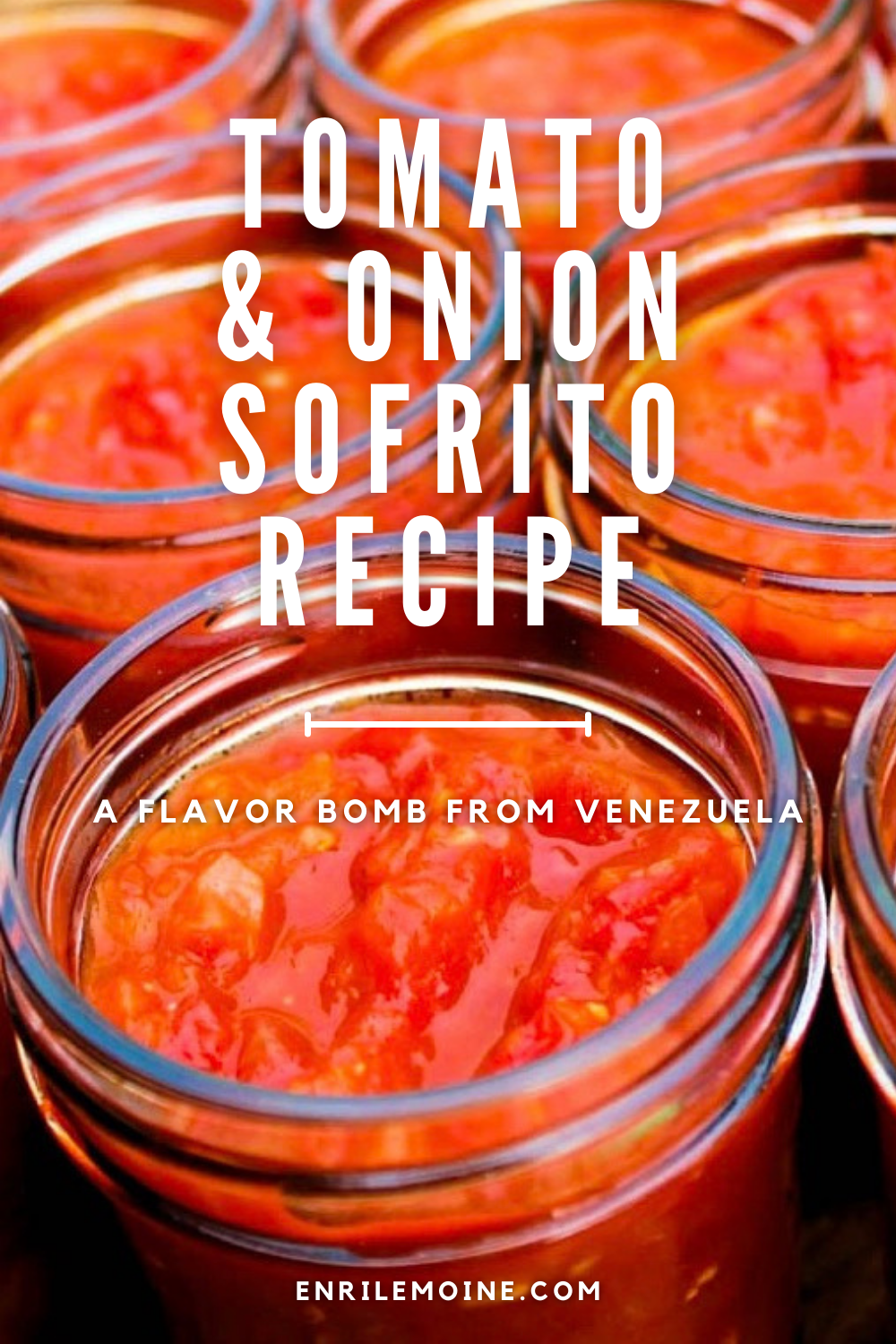
Thanks for subscribing to my Youtube channel and visiting my Amazon shop.
Venezuelan Tomato Sofrito
Ingredients
- 3 tablespoons olive oil
- 1 large onion finely chopped
- 2 garlic cloves minced
- 5 pounds tomatoes about 2.5 pounds diced
- Coarse sea salt
Instructions
- In a deep skillet, sauté the onions and garlic over medium-high heat until they’re translucent, about 5 minutes.
- Add the tomatoes and cook, stirring frequently, for another 5 minutes.
- Add salt to taste.
- Reduce the heat, cover, and simmer for 20 minutes. Uncover and continue to simmer for 10 more minutes.
- If the sofrito is too watery, you might need to cook it longer until the liquid reduces and reaches the desired consistency.
For Canning
- Transfer the sofrito to sterilized 6-ounce Mason jars, ensuring there's about half an inch (a little more than a centimeter) of free space at the mouth of the jar. Make sure the rim of the jar is perfectly clean, as any particle can interfere with the sealing process. When capping the jars, place the lid first, followed by the screw-on ring.
- Fill a canning pot halfway with water to process the jars. Place the jars on the canning rack inside the canning pot. The jars should be covered with at least an inch (2.5 cm) of water.
- Cover the pot and set it over medium heat until it boils. Once the water starts boiling, let it boil for 20 minutes.
- After the jars have been processed, place them on a kitchen towel and let them cool completely. The lids should make a "pop-up" sound and appear slightly concave in the middle. This indicates that the jar has been vacuum-sealed. If any lid doesn't make the sound and isn't concave, you'll need to reprocess the jar, store it in the fridge, and consume its content within the next few days.
- Sealed sofrito jars should be stored away from light. They will last up to 18 months.
Nutrition
Notes
Did you make this recipe?
Tag @enrilemoine on Instagram and hashtag it #byenrilemoine. Thank you!
- 35 Foolproof and Fuss-Free Authentic Venezuelan Recipes - October 2, 2025
- Venezuelan Pineapple Upside-Down Cake Recipe - September 23, 2025
- Venezuelan Pan Francés: Step-by-Step Recipe - September 18, 2025
